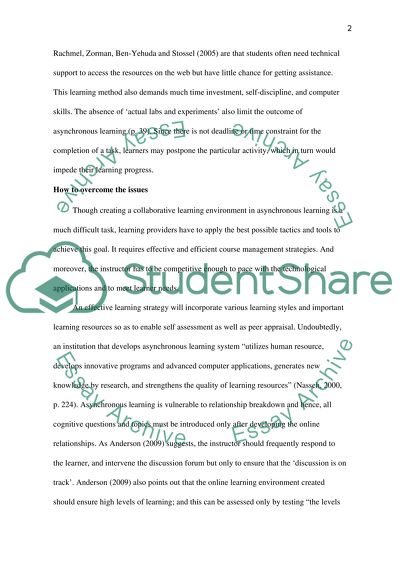Overcoming Asynchronous Online Learning Limitations Essay. Retrieved from https://studentshare.org/nursing/1466172-overcoming-asynchronous-online-learning
Overcoming Asynchronous Online Learning Limitations Essay. https://studentshare.org/nursing/1466172-overcoming-asynchronous-online-learning.


